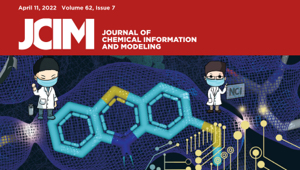
JCIM Cover | Observing Noncovalent Interactions in Experimental Electron Density for Macromolecular Systems: A Novel Perspective for Protein–Ligand Interaction Research
We report for the first time the use of experimental electron density (ED) in the Protein Data Bank for modeling of noncovalent interactions (NCIs) for protein–ligand complexes. Our methodology is based on reduced electron density gradient (RDG) theory describing intermolecular NCIs by ED and its first derivative. We established a database named Experimental NCI Database (ExptNCI; http://ncidatabase.stonewise.cn/#/nci) containing ED saddle points, indicating ∼200,000 NCIs from over 12,000 protein–ligand complexes. We also demonstrated the usage of the database in the case of depicting amide−π interactions in protein–ligand binding systems. In summary, the database provides details on experimentally observed NCIs for protein–ligand complexes and can support future studies including studies on rarely documented NCIs and the development of artificial intelligence models for protein–ligand binding prediction.
